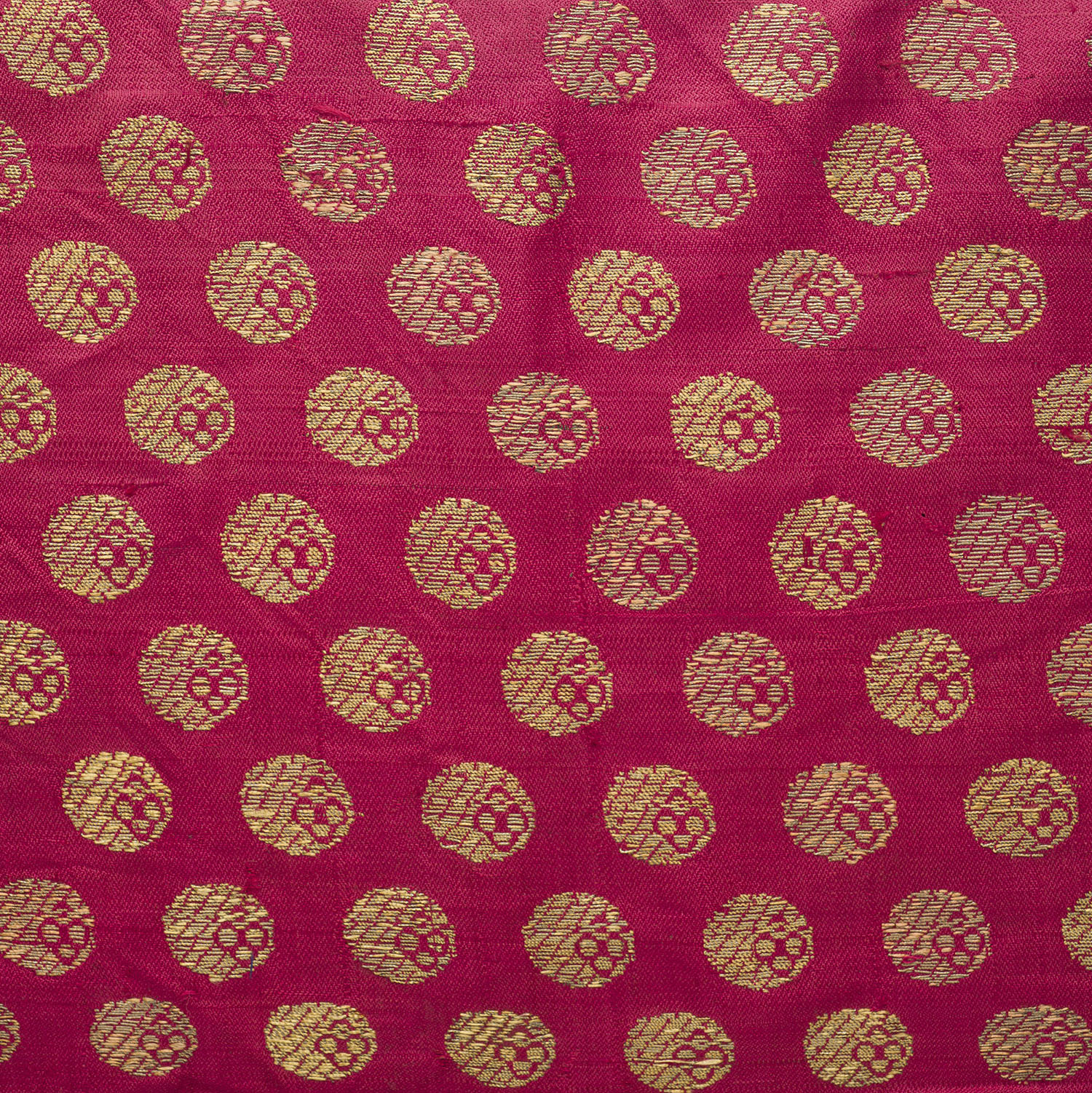ARTICLE
Ashrafi
A motif embroidered in the shape of gold coin, associated with Banarasi and Chanderi textiles, ashrafi means “coins” in Persian and derives its shape and name from old gold sovereigns used in medieval India.
Like most motifs used on the handwoven Chanderi fabric, the ashrafi is embroidered with needles on the fabric using the handloom. The circular motif is woven with metallic threads and spread all over the fabric in a floral pattern as ashrafi booti. This gilded brocade design is a marked feature of the Chanderi silk-cotton textiles. In Chanderi fabric the lightweight and sheer texture of silk-cotton was complemented with the golden ashrafis traditionally done with a zari thread. While popularised with Chanderi, the ashrafi is also significantly embroidered on Banarasi textiles; most distinctly red silk embellished with ashrafis of pure gold zari.
Now, since increasingly mass-produced, the ashrafi booti is embroidered with regular threads and coated with gold, silver and copper dust for its characteristic metallic sheen. Besides textiles, the motif also appears in handicraft works such as Bidriware.
Bibliography
Our website is currently undergoing maintenance and re-design, due to which we have had to take down some of our bibliographies. While these will be re-published shortly, you can request references for specific articles by writing to hellomapacademy@map-india.org.






![The façade of the Maneckji Seth Agiary, a Zoroastrian fire temple, is a standout example of the popularity of the Persian Revival Style in Western India in the 19th and 20th centuries. This style was often seen in the architectural patronage of the Parsis, who emerged as one of the most influential mercantile communities of British India. Popular motifs of this style, like the mythical lamasus (winged bulls with human heads) and the faravahar (a winged guardian spirit in Zoroastrianism), drew on the historical art and architecture of the Achaemenid and Sasanian empires from sites like Persepolis, Bisotun, Taq-e Bostan, Naqsh-e Rostam and Naqsh-e Rajab in Persia.
The Parsi community’s adoption of this style occurred largely due to their networks of global commerce and politics, allowing them to access and translate research of ancient Persia into visible symbols that underlined their association with antiquity, imperial power, and art.
نمای آتشکدهی زرتشتی مانِکجی سِت نمونهی بارزی از رواج سبک «احیای [معماری] ایرانی» در غرب هند طی سدههای نوزدهم و بیستم است. این سبک غالباً در بناهایی دیده میشد که پارسیان، از بانفوذترین جوامع بازرگان در هند بریتانیا، بانیشان بودند. نقشمایههای محبوب این سبک، مانند گاو بالدار اساطیری (لاماسو) و فَروَهَر (روح بالدار نگهبان در دین زرتشت)، برگرفته از هنر و معماری شاهنشاهی هخامنشی و ساسانی، در جاهایی چون تخت جمشید و بیستون و طاق بستان و نقش رستم و نقش رجب، بود.
اقتباس جامعهی پارسیان از این سبک بسیار مرهون روابط گستردهی تجاری و سیاسی آنها بود که دسترس به پژوهشها دربارهی ایران باستان و برگردانیدن آنها به نمادهای بصری را ممکن میکرد و بر پیوند پارسیان با دوران باستان و قدرت شاهنشاهی و هنر تأکید میکرد.](https://mapacademy.io/wp-content/plugins/instagram-feed/img/placeholder.png)
